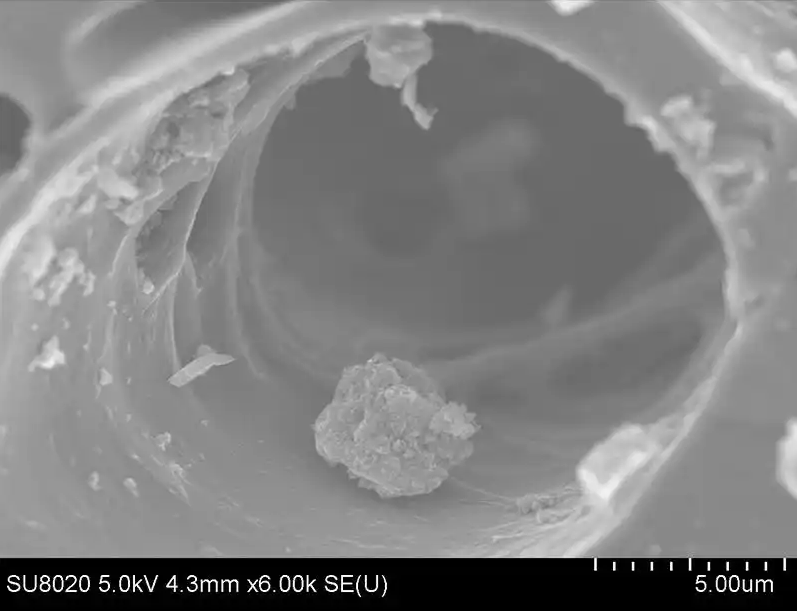

The Pore Structure of Activated Carbon-Macropore
The most commonly used methods to study the pore structure parameters of activated carbon are based on mercury intrusion, adsorption and capillary agglomeration. Light and electron microscopy can only qualitatively understand the shape and size of larger pores. The minimum pore size of activated carbon was obtained by X-ray small angle scattering method.
As for the division of pore size, three basic types of pores have been clearly defined above: macropores, transition pores and micropores.
Macropore
One of the largest pores of activated carbon is called macropore. The upper limit of the radius of curvature of the surface is very large. The lower limit of the radius of curvature is 1000-2000Å as specified by Dubinin, that is to say, only when the relative pressure is close to 1, capillary condensation occurs to fill the large pore volume. Thus, in a conventional adsorption device, this phenomenon is virtually indistinguishable from the standard volume condensation of a flat surface. From this point of view. It is technically impossible to achieve the filling of the macroporous volume as a result of vapor condensation, and it is also impossible to obtain an understanding of the macroporous structure.
Therefore, the structure parameters of macropores can not be obtained by adsorption method. The volume distribution of macropores and the specific surface area of macropores with effective radius in the range of 103 ~ 106 Å can be obtained only by mercury intrusion method. The macropore volume of activated carbon is usually 0. 2~0.8 cm3/g. The maximum effective radius of the distribution curve is in the range of 5 000~20 000 Å. The surface area of the macropores is usually in the range of 0. 5~2 m²/g. Such a small specific surface area does not play an obvious role in adsorption, but the macropores act as transport channels during adsorption, making it easy for adsorbed molecules to enter the interior of activated carbon particles. The main parameters of macroporous structure of activated carbon are: macroporous volume, specific surface area and pore volume distribution of unit mass adsorbent.